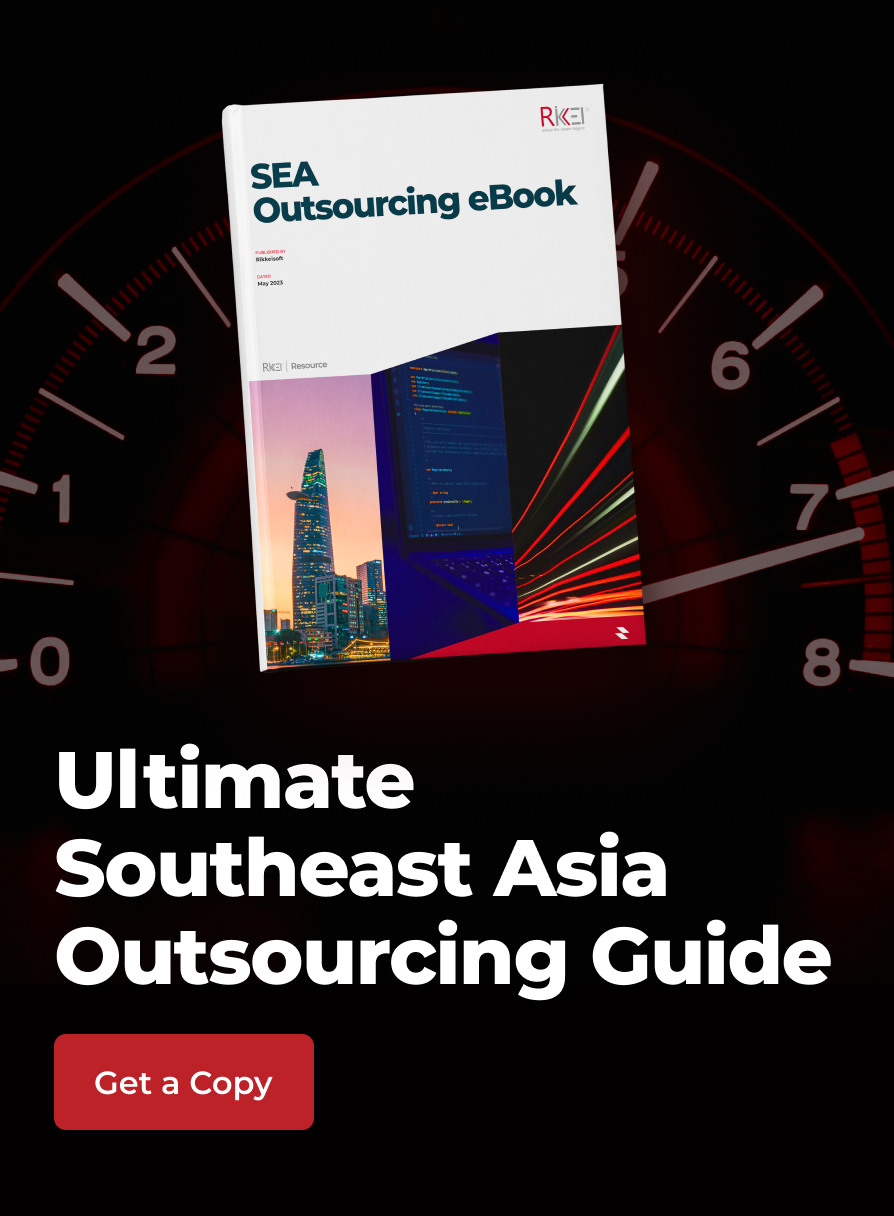30 Best Web Development Frameworks for Backend & Frontend
Contents
What is a Web Development Framework?
A Web Development Framework is a collection of tools, libraries, and best practices that simplifies and streamlines web application development. It provides a structured and organized foundation, allowing developers to focus on writing application-specific code rather than dealing with repetitive tasks or boilerplate code.
Web development frameworks typically include features like templates for UI design, pre-built components for standard functions, libraries for handling HTTP requests, tools for managing databases, user authentication, and other essential tasks. In addition, they often follow specific design patterns, such as Model-View-Controller (MVC), and encourage developers to adopt them to improve code maintainability and reusability.
Benefits of using Web Development Frameworks
Web development frameworks offer several significant benefits to developers, making them an indispensable tool for designing and building modern websites and applications. Here are some benefits of using web developments frameworks:
- Faster Development Process: Web development frameworks provide developers with pre-built components, libraries, and tools, which can significantly speed up the development process. This allows developers to focus more on core functionalities rather than spending time on repetitive tasks, such as creating the same code for different projects.
- Code Reusability: Frameworks encourage reusable code, making it easier for developers to share and reuse components across different projects. This can significantly improve productivity and reduce development time.
- Better Code Organization: Web development frameworks impose a structured approach to organizing code, following specific conventions and best practices. This results in cleaner, more maintainable code that is easy to understand and modify, even for developers new to the project.
- Security: Web development frameworks often have built-in security features, such as protection against common web vulnerabilities (e.g., XSS, CSRF, SQL injection, etc.). This helps developers maintain a robust security posture with minimal effort.
- Regular Updates and Support: Popular web development frameworks benefit from active communities which provide regular updates, bug fixes, and new features. This ensures the framework stays updated with current industry standards and security practices.
- Easier Collaboration: Working with a framework allows developers to follow a consistent coding style and conventions. This makes it easier for large teams or developers from different backgrounds to collaborate on the same project.
Types of Web Development Frameworks
Several web development frameworks are available, catering to different programming languages and functionalities. Some popular types include frontend frameworks and backend frameworks.
1. Frontend Frameworks
Frontend frameworks (client-side frameworks) are primarily involved in shaping a web application’s user interface (UI) and user experience (UX). These frameworks help design, create, and interact with websites by providing libraries and tools that make it easier to build visually appealing and responsive designs.
2. Backend Frameworks
Backend frameworks (server-side frameworks) manage server-side operations, such as data storage, logic, and server-client communication. Backend frameworks create the foundation of a web application by providing a structure and tools for managing databases, authentication, RESTful APIs, and other core functionalities.
15 Best Web Frameworks for Front-End Development
1. Bootstrap
Bootstrap is a widely-used, open-source front-end framework that simplifies designing and building responsive, user-friendly websites and applications. Developed by Twitter engineers in 2011, Bootstrap provides a collection of pre-built HTML, CSS, and JavaScript components, which include typography, forms, buttons, navigation structures, and more. In addition, it follows a mobile-first approach, ensuring consistent and seamless experiences across devices.
2. React
React is a popular JavaScript library developed by Facebook and mainly used to build complex and interactive user interfaces through reusable components. React makes it easier to update and render specific parts on a web page without affecting the rest of the page, providing a fast and smooth user experience.
3. Angular
Angular is an open-source, JavaScript-based web application framework developed by Google, and it is designed to make building web applications more efficient. It is often called a “Superheroic JavaScript MVW Framework” with MVW standing for Model-View-Whatever, as Angular adapts to various architectural patterns, like MVC (Model-View-Controller) or MVVM (Model-View-ViewModel).
Angular offers a range of tools and features, such as two-way data binding, dependency injection, and a robust set of directives, enabling developers to quickly create complex and dynamic web applications. In addition, Angular utilizes a declarative approach to handle the user interface, making the code more readable and maintainable.
4. Vue.js
Vue.js is a lightweight and flexible JavaScript framework mainly used for building user interfaces and single-page applications. Learning and integrating Vue.js into a project is relatively straightforward, allowing developers to create engaging and responsive UI components with it easily. One of the critical strengths of Vue.js is its incremental adaptability, which allows developers to use it in part or as the main framework for a project. This flexibility lets teams easily integrate Vue.js with existing projects or choose it as the primary choice for new applications, depending on their needs.
5. Ember.js
Ember.js is an open-source JavaScript framework for building scalable and maintainable web applications. It follows the Model-View-ViewModel (MVVM) architectural pattern, which promotes the separation of concerns and encourages a more structured, modular, and reusable codebase. As a result, Ember.js excels in building ambitious and feature-rich applications by providing a set of abstractions, conventions, and best practices that simplify and standardize development.
6. Backbone.js
Backbone.js is a lightweight and flexible JavaScript library that provides a minimal structure to organize and manage web application code effectively. It brings the Model-View-Controller (MVC) pattern to web applications, which promotes structured programming, modularity, and separation of concerns.
The main components of Backbone.js are models, views, collections, and routers. Models manage application data, while views handle user interface interactions and render HTML markup. Readers work groups of models, taking mass updates and data synchronization. Meanwhile, routers enable the navigation and routing of URLs for managing application states.
7. Foundation
Foundation is a widely-used, open-source, responsive front-end framework enabling developers to create visually appealing, user-friendly web applications. Developed by ZURB, Foundation incorporates HTML, CSS, and JavaScript to deliver a seamless and adaptable approach to web development. In addition, it offers a robust collection of pre-built components, such as grids, buttons, navigation, and forms, significantly speeding up the development process.
8. Semantic UI
Semantic UI is a frontend development framework that is a modern, responsive, and user-friendly frontend framework designed to create beautifully styled web interfaces with ease. It uses human-friendly HTML, CSS, and JavaScript to make web development simple, intuitive, and visually appealing.
Critical features of Semantic UI include a rich library of UI elements such as forms, buttons, icons, cards, and more that can be customized and extended to fit project requirements. The framework supports both mobile and desktop designs, ensuring that your website looks great on all devices.
9. Material-UI
Material-UI is a react-based framework that implements Google’s Material Design principles, offering a rich library of ready-to-use UI components for faster development. The framework offers a responsive grid layout system, various navigation components, form inputs and controls, cards, dialogs, tooltips, and many other design elements, all in compliance with Material Design principles. Material-UI also supports theming and customization, enabling developers to adapt the visual appearance to specific branding requirements.
10. Bulma
Bulma is an open-source, modern CSS framework based on Flexbox that provides a highly responsive, mobile-first design. It offers a clean, minimalistic, and lightweight structure with various UI components, making it perfect for fast and efficient web development.
Bulma is modular and customizable, allowing developers to import only the features they need quickly. Thanks to its comprehensive documentation and the active developer community, Bulma is an excellent choice for creating attractive, user-friendly web applications with minimal effort.
11. Svelte
Svelte is an innovative and modern front-end framework for building web applications. It differs from traditional frameworks like React and Angular by shifting the work from the browser to the build step.
The unique approach of Svelte offers faster development, smaller bundle sizes, and improved performance. The framework provides a simple and intuitive API, allowing developers to create reactive components without needing complex boilerplate code. In addition, with its declarative syntax and built-in support for CSS and animations, Svelte makes it easy to build interactive and visually appealing user interfaces.
12. Knockout.js
Knockout.js is a lightweight, open-source JavaScript library that enables developers to create rich, responsive, and interactive web applications with a clean, easy-to-understand, and maintainable codebase. Based on the Model-View-ViewModel (MVVM) design pattern, Knockout.js simplifies the process of binding data between the UI and the underlying data model.
13. Meteor
Meteor is a full-stack JavaScript platform for building web and mobile applications using a unified API and ecosystem centered around the Node.js runtime environment. It is known for its ease of use, real-time updating capabilities, and seamless integration with various libraries and packages.
Meteor’s key strength lies in its ability to automatically update the UI in response to data changes on both the server and client sides, creating an efficient and reactive user experience. Additionally, Meteor allows for building iOS and Android apps alongside web applications using the same codebase.
14. Aurelia
Aurelia is an open-source, modern, highly modular, and powerful front-end JavaScript framework for developing web applications. It is designed to be discreet, flexible, and easy to use, enabling developers to build cutting-edge applications with minimal boilerplate and configuration. With its strong focus on convention over configuration, Aurelia provides a clean and elegant syntax for writing maintainable, testable, and scalable code.
Aurelia boasts excellent two-way data binding capabilities, an efficient dependency injection system, a sleek templating engine, and a strong focus on extensibility, which allows easy integration with third-party libraries and tools.
15. Quasar
Quasar was built on top of the popular Vue.js framework and offered an extensive set of pre-built components, a unified development experience, and advanced tooling for streamlining the development process.
Quasar focuses on providing developers with an efficient way to build feature-rich and responsive user interfaces for various platforms, including web, mobile (iOS and Android), and desktop (Electron) with a single code base. Its rich component library enables swift implementation of standard UI elements, while its extensive customization options ensure a distinctive application appearance.
15 Best Web Frameworks for Back-End Development
1. Express.js
Express.js, built on the Node.js platform, is a fast and minimalist web framework for creating server-side applications. It provides tools for creating web applications and APIs, and handling HTTP requests, making it easier to develop web apps in JavaScript across both client and server sides. Some of Express.js’s key features and benefits of Express.js include its lightweight design, routing capabilities, support for .middleware, and easier management of HTTP requests and responses.
2. Django
Developed in Python, Django is a widely-used high-level web framework designed to help developers build robust web applications rapidly. Django includes an ORM (Object Relational Mapping) system, simplifying the process of interacting with databases and creating database schemas.
3. Ruby on Rails (RoR)
Ruby on Rails is a popular Ruby-based web development framework designed to facilitate rapid application development (RAD). RoR follows the MVC (Model-View-Controller) architectural pattern, which helps organize the code and separate the concerns effectively. Ruby on Rails emphasizes convention over configuration, meaning that it provides developers with a set of best practices and defaults that make it easier and faster to develop web applications.
The framework includes many built-in tools that simplify common tasks such as database management, routing, form validation, and authentication. Rails is also well-known for its straightforward syntax and use of the “Don’t Repeat Yourself” (DRY) principle, minimizing redundant code.
4. Laravel
Laravel is a widely-used open-source PHP web framework suitable for building web applications following the MVC pattern. Laravel provides various tools and features, such as routing, database migrations, and authentication, making building secure and maintainable web applications easier.
The Laravel framework is known for its emphasis on code readability, maintainability, and adherence to industry best practices. It is backed by an engaged community of developers and professionals, offering many resources, including comprehensive documentation, online courses, and forums that help developers rapidly adopt and master the framework.
5. Spring Boot
Spring Boot is an open-source, built on top of the popular Spring Framework and provides a powerful set of tools and features for building production-ready, standalone applications with minimal configuration and boilerplate code.
One of the main advantages of Spring Boot is its ease of use, enabling developers to create applications quickly using embedded servers, pre-configured templates, and out-of-the-box integrations with various data sources, caches, and other components. Another important aspect of Spring Boot is its robust ecosystem, with numerous plugins and extensions available for popular IDEs, build tools, and monitoring solutions.
6. Flask
A micro-framework for Python that is designed to be lightweight and easy to use, perfect for small to medium-sized web applications. Built on the Werkzeug WSGI toolkit and Jinja2 template engine, Flask promotes reusable code and simplifies complex workflows.
Flask’s minimalistic and modular nature enables developers to choose and integrate various extensions and libraries to cater to their project needs. Flask supports RESTful request dispatching and offers built-in support for secure cookies, templating, and form handling.
7. ASP.NET Core
ASP.NET Core is a versatile, open-source web development framework by Microsoft for creating modern web applications, APIs, and microservices. It runs on .NET Core runtime and is compatible with Windows, macOS, and Linux. It utilizes the Model-View-Controller pattern for modular and maintainable applications.
Key features of ASP.NET Core include its light weight, good performance, and modular design. As a result, developers can select the required components, resulting in optimized applications. It also provides built-in support for dependency injection, enabling easy management of services and components.
8. Node.js
A JavaScript runtime built on Chrome’s V8 JavaScript engine, Node.js is designed to enable developers to create scalable network applications and APIs.
9. Meteor
Meteor is a full-stack JavaScript platform for building web and mobile applications using a unified API and ecosystem centered around the Node.js runtime environment. It is known for its ease of use, real-time updating capabilities, and seamless integration with various libraries and packages.
Meteor’s key fron strength lies in its ability to automatically update the UI in response to data changes on both the server and client sides, creating an efficient and reactive user experience. Additionally, Meteor allows for building iOS and Android apps alongside web applications using the same codebase.
10. Symfony
Symfony is a robust PHP web development framework that offers reusable components, libraries, and tools for efficient, scalable, and maintainable applications. It accelerates web projects, improves application interoperability, and promotes PHP best practices and standards. Key features include modular architecture, reusable components, integrated testing support, and a large developer community.
11. Play Framework
Play Framework is an open-source, high-performance web app framework for creating scalable and robust backend systems on the JVM. It prioritizes convention over configuration, facilitating quick app development. Key features include hot code reloading, asynchronous programming, and built-in support for popular APIs and libraries. Play enables easy integration with databases, cache systems, and third-party tools and provides powerful support for developing and managing RESTful APIs, making it perfect for web services.
12. Phoenix Framework
The Phoenix Framework is a modern back-end web development framework built using the Elixir programming language for building highly scalable and maintainable web applications. It is designed for creating high-performance, fault-tolerant systems with low latency and real-time capabilities. Some key features of the Phoenix Framework include LiveView (a built-in feature), Ecto (a database library), Plug, Channel, excellent performance, reliability, and fault tolerance.
13. Kohana framework
Kohana is a high-performance, open-source PHP framework using the MVC pattern, offering a lightweight and customizable platform for web applications and APIs. Initially based on CodeIgniter, it now boasts additional features like a cascading filesystem, modular structure, and HMVC architecture support. With community-driven development, strict coding standards, and well-structured code, Kohana provides comprehensive documentation and a supportive community for developers beginning new projects.
14. Sails.js
Sails.js is a versatile backend framework for building custom Node.js applications, using the Model-View-Controller (MVC) pattern for scalability and maintainability. Built on Express.js, it supports multiple databases, real-time communication, automatically generated APIs, modular architecture, scalability, and an active community. Key features include compatibility with various databases, WebSocket support, RESTful API generation, modular code, horizontal scaling, and a strong ecosystem.
15. Struts
Struts, an open-source backend framework by Apache Software Foundation, is designed for creating Java-based web applications using the Model-View-Controller (MVC) pattern. It simplifies the development, testing, and deployment of enterprise-level applications and ensures clear separation of application layers.
Struts relies on Java Servlets, JavaBeans, and JavaServer Pages (JSP), offering a robust set of libraries, validation rules, and extensible architecture. It supports internationalization, localization, and form handling for efficient web application development.
Key Struts features include modular design, code reusability, extensibility, robust form handling, security, and an active community.
FAQs
1. What is framework in web development?
A framework in web development is a pre-built collection of libraries, tools, and best practices that help developers streamline the process of building web applications. It provides reusable code, predefined structures, and templates for common tasks and functionalities such as user inputs, database communication, and server-side processing. Frameworks also enforce coding standards, encourage modularity, and improve development efficiency.
2. What are web development frameworks?
Web development frameworks are software tools designed to simplify web application creation. They provide pre-written code, templates, and libraries, allowing developers to focus on building the application’s core functionality rather than writing repetitive or common code from scratch.
3. Why should someone use a web development framework?
A web development framework can speed up development time, increase code quality, and make creating and maintaining web applications easier. They provide developers with pre-built resources, best practices, and a standardized structure, making collaborating with other developers easier and ultimately creating better solutions.
4. What are some popular web development frameworks?
Some popular web development frameworks include React, Angular, Vue.js, Django, Ruby on Rails, Laravel, Express, Spring, ASP.NET Core, Flask, Symfony, Meteor, Ember.js, Bootstrap, and Foundation.
5. What is the fastest web development framework?
It isn’t easy to pinpoint the single fastest web development framework, as performance can vary based on the use case, the developer’s familiarity with the framework, and many other factors. However, some popular high-performance web development frameworks include Express.js, Ruby on Rails, Django, Flask, Spring Boot, etc.
6. Can I use multiple web development frameworks in a single project?
Yes, it is common for developers to use multiple frameworks to leverage the specific strengths and features of each. For example, it uses a frontend framework like Angular or React alongside a backend framework like Django or Node.js.
7. Do I need to know a specific programming language to use a web development framework?
Yes, web development frameworks are usually built around specific programming languages:
For example, React, Angular, and Vue.js use JavaScript.,Django and Flask use Python, Ruby on Rails uses Ruby, Laravel uses PHP.
Rikkeisoft – Your Trustworthy Web Development Partner
Knowing about web development frameworks is fun and all, but what if you just wanted to have a functional web application without having to mess around with coding and whatnot? You can consider outsourcing your web development to a service provider, notably Rikkeisoft.
Founded in 2012, Rikkeisoft is a leading technology service provider in Vietnam. With over 10 years of experience and 500+ completed projects under our belt, we work closely with our clients to ensure that their ideas are fully realized and exceed their expectations. Our suite of services is vast and extensive, including web development as a core offering.
More From Blog

October 28, 2025
Australia’s Fintech Revolution: Trends Shaping the Future of Digital Finance
Australia has emerged as one of the most dynamic fintech hubs in the Asia-Pacific region, driven by strong consumer demand for digital financial services, supportive government regulations, and the widespread adoption of innovative technologies. As the industry matures, the imperative for digital transformation has become unmistakable: fintechs and financial institutions alike are under pressure to […]

August 12, 2025
AI and Big Data in Building Smart Insurance Platforms
The insurance industry is now standing at a pivotal moment in its digital evolution. Traditional insurance models built on historical data analysis and reactive risk assessment are rapidly giving way to intelligent, predictive platforms powered by artificial intelligence and big data analytics. This transformation represents more than technological modernization; it’s a fundamental reimagining of how […]

July 23, 2025
Insurtech’s Game-Changing Trends: How AI and Digital Transformation Are Reshaping Insurance
The financial technology sector is experiencing unprecedented change, making it essential for business leaders and technology professionals to stay ahead of emerging innovations. Throughout 2025, insurance technology (insurtech) has emerged as a powerful catalyst for change, fundamentally altering how insurance providers conduct business, engage with clients, and assess risks. This technological evolution represents more than […]

April 4, 2024
Big Data Performance: Maximize Your Business Value
In today’s data-driven world, organizations are constantly generating and collecting immense amounts of data to understand their customers more deeply. This data, often referred to as “big data,” holds immense potential for organizations to seek opportunities and overcome challenges. But accessing and analyzing big data isn’t enough to have proper strategies; organizations must pay attention to […]

April 4, 2024
How Real-Time Data Analysis Empowers Your Business
In today’s fast-paced business landscape, the ability to quickly make data-driven decisions has become a key differentiator for success. Real-time data analysis, the process of analyzing data as soon as it’s generated, has emerged as a powerful tool to empower business across industries. By leveraging real-time data analysis, organizations can gain timely and actionable insights, […]

April 4, 2024
Differences Between Data Science and Computer Science
Data Science and Computer Science are distinct fields overlapping in certain areas but have different focuses and objectives. The article below will help you clearly understand the differences and the close connection between the two fields. What is Data Science? Data Science is an interdisciplinary field that combines scientific methods, processes, algorithms, and systems to […]

